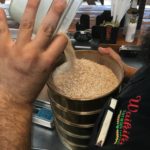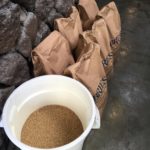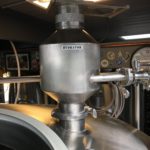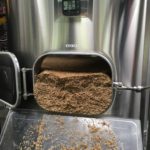What is it about the “creeping seasons” in America? You start seeing Halloween candy in August, Christmas stuff by Halloween, commercials for the Olympic Games during the Super Bowl, and rampant consumerism drives everything. This phenomenon isn’t just limited to selling decorations, clothing, costumes and fragrances. This crazy business world works the same way for brewers.
Release dates for seasonal beers are moving much the same way consumer holidays are. Just the other August night, I was in a bar after work letting the emails and stupidity slip away by manner of direct hop consumption. One of my friends orders “whatever Sam Adams you have on tap,” and the server comes back with a beautiful glass of Oktoberfest. A solid beer for sure, but on August 19? And I was in Honolulu, which means the beer was shipped to go on tap several weeks earlier. Oktoberfest doesn’t start in Munich until September 17, when the first kegs of the sanctioned (and only in Munich) Oktoberfest beers will be tapped by the limited breweries that can legally make them. So why the rush here in the U.S.?
Well, no one wants their winter ale to hit shelves two weeks after competitors. Creeping seasons is all about marketing, shelf space and the fist-to-skull world of big corporate brewers. And the way to avoid it is to seek “seasonals” that are actually seasonal.
Any idiot can brew an Oktoberfest in October or a Spring Bock in the Fall (I am an idiot, so I would know). What you can’t do very well is brew a seasonal beer with fresh ingredients when they are not fresh. What does that mean?
 Everyone knows a fresh-picked tomato in late July/August makes the best BLT in the world. An apple pulled off the tree in September/October tastes like nothing else. So why don’t we seek beers like that? We do. The beer world loses its collective mind over some seasonal releases. Take Dogfish Head’s pumpkin beer. Dogfish Head will not brew it without freshly processed pumpkins. Then look at all the “wet hop” or “fresh hop” beers. Brewers have a limited window to get these hops and only hours to brew with them. That’s what makes these beers great.
Everyone knows a fresh-picked tomato in late July/August makes the best BLT in the world. An apple pulled off the tree in September/October tastes like nothing else. So why don’t we seek beers like that? We do. The beer world loses its collective mind over some seasonal releases. Take Dogfish Head’s pumpkin beer. Dogfish Head will not brew it without freshly processed pumpkins. Then look at all the “wet hop” or “fresh hop” beers. Brewers have a limited window to get these hops and only hours to brew with them. That’s what makes these beers great.
I had the opportunity to see two real seasonal beers in the last few weeks. The first was a fresh hop b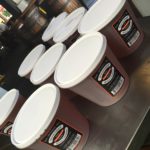 eer using Gargoyle and Cascade hops. In a 7,000-mile round trip, the Brew Master flew to California, procured the hops, and flew back the same day. Straight from the airport and into the brew kettle. You cannot fake it; you cannot freeze the hops and call it “fresh hopped” beer. You cannot move the date forward for fiscal expediency. You just can’t.
eer using Gargoyle and Cascade hops. In a 7,000-mile round trip, the Brew Master flew to California, procured the hops, and flew back the same day. Straight from the airport and into the brew kettle. You cannot fake it; you cannot freeze the hops and call it “fresh hopped” beer. You cannot move the date forward for fiscal expediency. You just can’t.
The second beer was even more “seasonal,” a toasted macadamia nut and local honey nut brown ale. To start with, very, very few “nut browns” actually use tree nuts. In this case, freshly harvested macadamia nuts, right from the tree, were toasted, filling the entire brewery with the most amazing 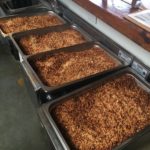 aroma. It smelled like heaven for almost an hour. Then, raw, unfiltered honey was added for body and to dry out the beer little. Truly, the brewing of this genuinely seasonal beer was amazing, and it will be the first real “honey nut brown” I have had in quite a while. A higher mash temp, a great malt bill and some care will create a truly original, and more importantly, truly SEASONAL beer.
aroma. It smelled like heaven for almost an hour. Then, raw, unfiltered honey was added for body and to dry out the beer little. Truly, the brewing of this genuinely seasonal beer was amazing, and it will be the first real “honey nut brown” I have had in quite a while. A higher mash temp, a great malt bill and some care will create a truly original, and more importantly, truly SEASONAL beer.
My point is that, if we are to really enjoy beer at its finest, we all need to seek out that summer-fresh BLT in beer form. Can you enjoy the Oktoberfest offerings in August? Absolutely. But what’s the delight for our taste buds in that? Something so gratifying (and delicious) comes from seeking out the real seasonal beers, standing in lines, trading for them, begging friends who live close to the brewery, and savoring beers brewed at the absolute perfect time.

